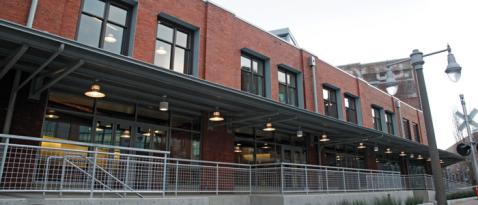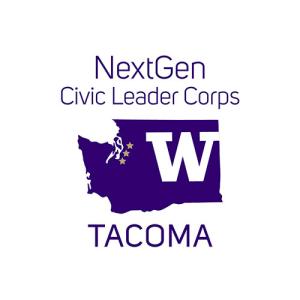Joy Building Opens for Spring
Built as a warehouse in 1892, the Russell T. Joy Building will provide space for new classrooms and the Academic Advising Center.

The renovated Russell T. Joy Building will open its doors to campus in a special celebration on March 15, 2011. Built as a warehouse in 1892, the building will provide new classroom space and a home for the new Academic Advising Center.
Below is brief history of the Joy Building put together by Artifacts Consulting:
Russell T. Joy started small and dreamed big.
He came to Tacoma in 1888 and worked as a clerk for the Tacoma Land Company. Like many who achieved the American dream, he worked hard to make a name for himself. In just four years, he was secretary and manager of the Excelsior Park Land Company and had established himself as a builder and real estate developer. In 1892, he commissioned construction of three structures within the Warehouse District, including his namesake, the Russell T. Joy Building, which cost $30,000 to erect.
Joy hired architects Pickles & Sutton, who designed many distinguished buildings in Tacoma, including the National Bank of Tacoma and the Rust Building. The Joy Building was originally two stories, but was designed so that additional floors could later be added on. The triangular-shaped, “flatiron” structure offered eight storefronts on Pacific Avenue. A loading dock in back gave easy access to inventory and materials from the Hood Street (now Commerce Street) railroad spur.
In its first decade, four businesses called the Joy Building home: the H.N. Richmond Paper Co., the Great Western Stove Co., the Wiegel Candy Co., and the Stardiamond Candy Co.
Ten years later, in 1903, a fire in the building’s second floor caused considerable damage for all four tenants; the two candy companies suffered nearly complete losses. A few months afterward, Joy hired prominent Tacoma architects Russell & Babcock to design improvements. In addition to reconstructing the burned-out second floor, a third story was added, along with ornamental details and four freight elevators.
Over the years, the Joy Building’s purposes have been diverse. After the fire the first new tenant was Tacoma Manufacturer’s Permanent Exposition, which moved into several storefronts in 1905. The building has housed a wholesale grocery, a tea and coffee wholesaler and a glove maker. Early in the 20th century, when automobiles became all the rage, a number of automobile-related businesses were located in the Joy Building, including a Firestone Tire store and Studebaker and Oldsmobile distributorships.
Another blaze broke out in 1928, when a pile of discarded fish seines, nets and burlap caught fire in the rented space of Frank Sussman and Co., a dealer of hardware and salvaged goods. But this time the fire did not spread, and the damage was minimal.
In 1933, when outdoor advertising was popular, the art deco-style Alt Heidelberg sign was painted onto the north face of the building. Complete with the brewery’s logo depicting the “student prince,” the sign was believed to be one of the last Alt Heidelberg ghost ads in existence.
In the latter half of the 20th century, the Joy Building fell into disuse — a neglected, unattractive and empty space. In 1997, the University of Washington Tacoma moved into the neighborhood, transforming the first of many dilapidated buildings into a modern university.
The Joy Building completes the university’s face along Pacific Avenue, providing much-needed classrooms and study space for students, and a home for our new Academic Advising Center.
Just as Russell T. Joy grew from a footnote into a larger role in Tacoma’s history book, the University of Washington Tacoma is growing to meet the increasing need for higher education in the South Puget Sound region.
Reconstruction of the Joy Building was funded by the Washington State Legislature. It would not have been possible without the support of many Washingtonians who ardently believe in UW Tacoma's future.



